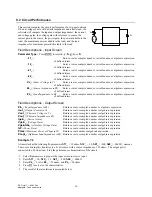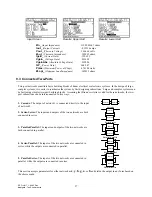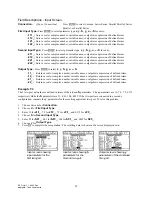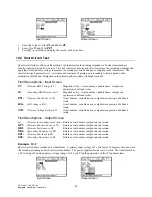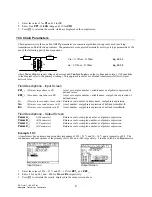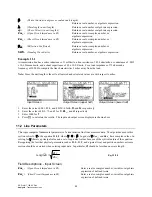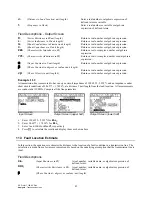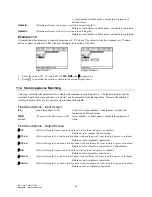
EE Pro for TI-89, 92 Plus
Analysis - Computer Engineering
49
Carry and Range Conditions - The shifting, rotating, arithmetic and bit manipulation operations can result in
Carry and Range Flags being modified. The specific condition for the flags to be set depend upon the operation
being performed. Range flag is set if the correct result of the operation cannot be represented in the current word
size and the complement mode. When the result is out of range, the lower order bits that fit the word size are
displayed.
In Table 12-1 below, we have used an example for a binary word size of 5 bits to convey the conventions and its
decimal interpretation.
Table 12.1 Decimal Interpretation of a 5 bit Binary
Binary
1's Complement
Mode
2's Complement
Mode
Unsigned
Mode
01111
15
15
15
01110
14
14
14
01101
13
13
13
01100
12
12
12
01011
11
11
11
01010
10
10
10
01001
9
9
9
01000
8
8
8
00111
7
7
7
00110
6
6
6
00101
5
5
5
00100
4
4
4
00011
3
3
3
00010
2
2
2
00001
1
1
1
00000
0
0
0
11111
-0
-1
31
11110
-1
-2
30
11101
-2
-3
29
11100
-3
-4
28
11011
-4
-5
27
11010
-5
-6
26
11001
-6
-7
25
11000
-7
-8
24
10111
-8
-9
23
10110
-9
-10
22
10101
-10
-11
21
10100
-11
-12
20
10011
-12
-13
19
10010
-13
-14
18
10001
-14
-15
17
10000
-15
-16
16
Note: The EE
•
Pro introduces a new convention for entering the binary integers. Binary integers start
with (b), octal numbers start with (o), decimal numbers with (d) and hexadecimal numbers by (h). This
convention is introduced to ensure that the machine convention of using 0d would be interpreted
properly when in hexadecimal mode.


